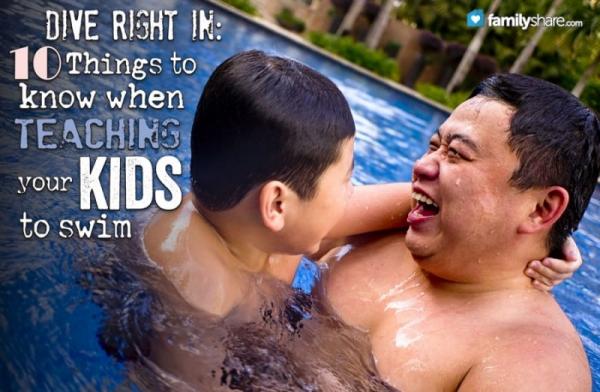
As a teenager in high school in Southern California, I took swimming as one of my physical education classes. The first day the teacher assessed everyone's ability level. He discovered that two of our class mates had never learned how to swim. He assigned me and another student to help these two young ladies learn to swim because we were both strong swimmers. I had a great deal of satisfaction at the end of the 6 week class when both of these non-swimmers demonstrated their ability to swim the length of the pool.
Having growing up with a pool in our backyard, I was shocked that anyone could reach the age of 14 and not know how to swim - especially in Southern California. And yet, statistics show that this is often the case. "In a 1994 CDC (Centers for Disease Control) study, 37% of American adults said they couldn't swim 24 yards ... a 2008 study conducted by researchers at the University of Memphis found that almost 54% of children between ages 12 and 18 can do no more than splash around the shallow end of a pool.
Swimming provides not only a fun way to exercise; it also can help save your child's life. "Participation in formal swimming lessons can reduce the risk of drowning by 88% among children aged 1-4 years. (Source: Pediatric & Adolescent Medicine 2009)"� (www.usaswimming.org/DesktopDefault.aspx?Tabld=1796)
We have taught all five of our children to swim using formal lessons and informal ones with us. Through the years, we have found the following tips helpful in teaching our children to be proficient and capable swimmers.
Safety first
Always be aware of your surroundings, the depth of the waters, steps, etc. Always pay close attention to where your child is in relation to the water. Know the rules for the pool. Also know your child's skill level and limitations. Do not let your child swim in deep water if he or she is unable to propel to the edge.
Introduce your children to swimming and the pool at an early age
One of the first activities we participated in with our youngest when we adopted him was to go swimming in our pool. He loved it.
Don't force anything
Forcing your child to put his face underwater before he is ready, can traumatize him. Let your child observe you or another child doing the task first, and then let them try.
Use a calm, happy voice
Do not belittle or tease. If you sound positive with your instruction, your child is more likely to respond positively.
Be well rested
This is important for the parent and the child. It will not be a pleasant experience if either of you are cranky and tired. You want your child to think of swimming as an enjoyable time.
Make it fun
The American Red Cross Infant and Preschool Aquatic Program parent's guide says this about learning to swim "when learning is fun, the children become so engrossed that they progress naturally and easily without really thinking about it."� (p.9, 1988 edition) Our children loved when we would play games and sing songs while learning a new skill. Singing "motor boat, motor boat go so slow; motor boat, motor boat go so fast; motor boat, motor boat step on the gas,"� while turning in a circle in the water and going faster with each phrase made being in the water a fun experience. Encourage your child to see how big a splash she can make while practicing kicking is another fun way to teach that skill.
Don't rush
Remember that every child learns at a different pace. If you need to, break each skill into smaller steps. For example, if you want to teach your child to put her face in the water and this frightens her, begin with having her "wash her face"� by rubbing the water on her cheeks. Next, encourage her to splash water onto her face to "rinse."� The next step would be to ask her to put a specific part of her face into the water such as her nose or chin. Finally teach her to blow bubbles. Oftentimes it helps if you as the parent demonstrate or say "let's do this together."�
Find something to motivate
When my husband was a little boy, he struggled to learn to swim. His mother would sign him up for lessons every summer and yet by the age of 8, he still could not swim well. That summer he had an instructor who found a way to motivate him. He threw a frog in the pool and told him to go get it. My husband jumped in and swam after that frog without even realizing he was swimming.
Use flotation devices as tool, not a crutch
The American Red Cross parent's guide (mentioned earlier) says this about flotation devices: "depending on their use, flotation devices can be an asset or a liability. You need to be informed on not only how to use them, but when to use them."� (p.9) Never use these devices as a substitute for supervision. Encourage your child to practice swimming skills without arm floats or swim rings so they develop their skills and their confidence in the pool.
Sign up for formal lessons
Search your local community for places that offer lessons such as the YMCA, community pools and recreation centers or even trained private instructors. For younger children these are often parent-child classes that help you teach your child.
Teaching your children to swim will take time and effort. But this will be a skill that can keep them safe, help them exercise and provide enjoyment their entire life.

